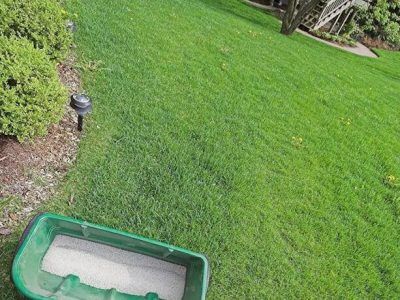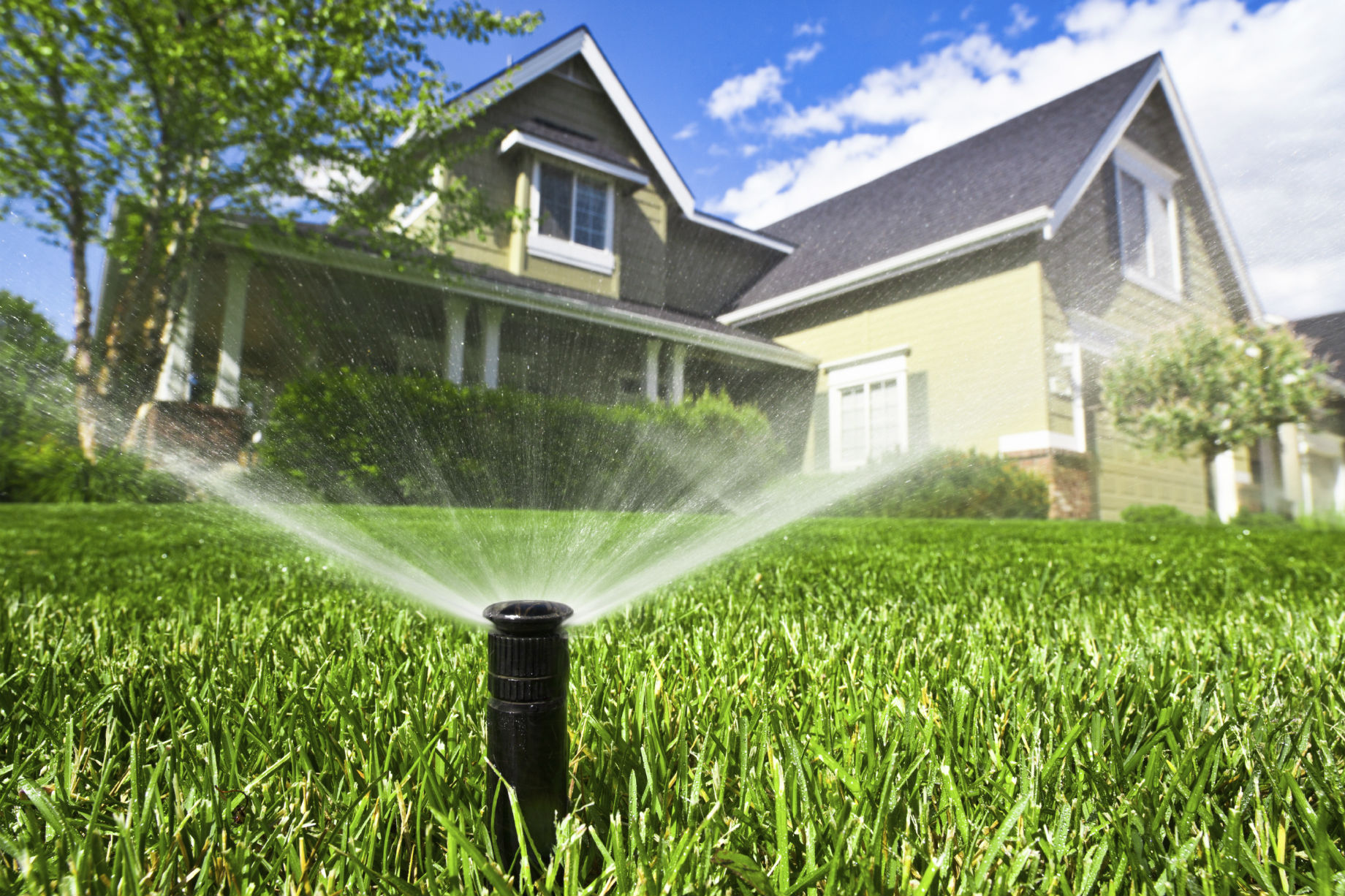When it comes to lawn care, one aspect that often goes overlooked is the importance of using the right fertilizer. Choosing the right fertilizer for your lawn is not merely a matter of aesthetics. It is an essential step towards maintaining the health and vitality of your lawn. The type of fertilizer you choose can significantly impact your lawn’s health, appearance, and long-term sustainability.
Fertilizers provide essential nutrients that your lawn requires to grow lush and healthy. However, not all fertilizers are created equal, and not all lawns have the same nutritional needs. This is where the importance of picking the right fertilizer comes into play. Using the wrong fertilizer can imbalance the soil’s nutrients, causing more harm than good to your lawn.
The impact of fertilizers on the health and appearance of your lawn cannot be overstated. A well-fertilized lawn will have a lush, green appearance, be more resistant to diseases, and better withstand weather changes. On the other hand, a poorly fertilized lawn may struggle to maintain its vigor, becoming patchy and discolored. It may also become more susceptible to diseases and pests, leading to further deterioration.
Choosing the right fertilizer for your lawn is, therefore, a critical part of lawn care. It involves understanding your lawn’s specific needs, the different types of fertilizers available, and how they can benefit your lawn. This knowledge will enable you to make an informed decision that will contribute to the overall health and beauty of your lawn.
Understanding Your Lawns Needs
In the section, ‘Understanding Your Lawn’s Needs’, we delve deeper into the specifics of your lawn, which are vital in choosing the right fertilizer. First, it’s crucial to identify the type of grass that makes up your lawn. Each grass type has unique nutritional needs and preferred soil conditions. For example, warm-season grasses like Bermuda and Zoysia often require different fertilizer ratios compared to cool-season grasses like Kentucky bluegrass and ryegrass.
The second critical aspect is understanding the soil composition of your lawn. The soil is the reservoir of nutrients for your grass and knowing its composition provides insight into what nutrients are abundant and which ones are lacking. Soil can range from sand, which drains quickly and holds fewer nutrients, to clay, which retains water and nutrients but may prevent adequate air circulation to the roots.
Conducting a soil test is an invaluable step in determining the nutritional needs of your lawn. Soil testing kits are readily available online or at your local garden center. These kits can accurately measure your soil’s pH level and essential nutrient concentrations.
The final step is interpreting the soil test results. A soil with a pH that’s too high (alkaline) or too low (acidic) can interfere with nutrient absorption. Most grass types prefer slightly acidic soil, with a pH between 6 and 7. The test will also measure levels of important nutrients like nitrogen, phosphorus, and potassium. By understanding these results, you can select a fertilizer that will supplement the lacking nutrients and correct any pH imbalance, ensuring a lush, green, and robust lawn.

Types of Lawn Fertilizers
Following a thorough understanding of your lawn’s needs, the next step is considering the various types of fertilizers available. These can broadly be categorized into organic and synthetic fertilizers, liquid and granular fertilizers, and slow-release versus fast-release fertilizers.
Organic fertilizers are derived from plant, animal or mineral resources and contain a variety of nutrients needed to enhance soil fertility. They are generally slower-acting, providing nutrients over a longer period and improving the overall soil structure. Synthetic fertilizers, on the other hand, are manufactured and contain specific nutrients. They act fast, providing immediate nutrition to your lawn, but can potentially harm the soil and environment if not used correctly.
The form of the liquid or granular fertilizer also influences its effect. Liquid fertilizers are easily absorbed and provide immediate nourishment to the grass. However, they require more frequent applications. Granular fertilizers are easy to apply, and their effects are long-lasting, requiring fewer applications. However, they take longer to show results as they need to be broken down by the soil.
Another critical distinction is between slow-release and fast-release fertilizers. As the names suggest, slow-release fertilizers provide nutrients over an extended period, promoting steady growth and reducing the risk of over-fertilization. Fast-release fertilizers provide immediate nutrition but require more frequent applications and carry a higher risk of over-fertilization and nutrient run-off.
Lastly, understanding common fertilizer ingredients is essential. Nitrogen promotes leaf and stem growth, making your lawn lush and green. Phosphorus supports root development, strengthening your lawn’s foundation. Potassium enhances overall plant health, helping your grass withstand stress, disease, and changes in temperature. The right balance of these nutrients, often displayed as an N-P-K ratio on fertilizer bags, depends on your specific lawn needs identified through soil testing.
Choosing the Right Fertilizer for Your Grass
To choose the right lawn fertilization, you must first match your lawn’s needs to the appropriate fertilizer type. Different grass types and soil conditions require specific nutrients to thrive. For instance, if your lawn has poor soil structure, organic lawn fertilizers, which improve soil structure over time, maybe the best option. On the other hand, synthetic fertilizers could be a better fit if your lawn is nutrient-deprived and needs immediate nourishment.
The choice also depends on how much time and effort you’re willing to invest. Liquid fertilizers, while quickly absorbed, necessitate frequent applications. Conversely, granular fertilizers are a longer-lasting, albeit slower, solution.
Understanding fertilizer labels is crucial in this decision-making process. Fertilizer labels typically provide information on the proportion of Nitrogen, Phosphorus, and Potassium (often referred to as NPK). For instance, a 20-5-10 fertilizer contains 20% Nitrogen, 5% Phosphorus, and 10% Potassium. These elements cater to the different needs of your lawn. Nitrogen promotes leaf and stem growth, Phosphorus aids in root development, and Potassium ensures overall plant health.

Finally, you should consider the specificities of your lawns. For cool-season grasses like Kentucky bluegrass or fescue, higher Nitrogen levels and a slow-release fertilizer are beneficial to support growth during the active growth periods in fall and spring. Warm-season grasses such as Bermuda or Zoysia grass thrive with fertilizers that have a balanced NPK ratio applied in late spring or early summer.
A slow-release granular fertilizer is advisable for clayey soil, while sandy soils would benefit from a more frequent application of liquid fertilizers. Remember, choosing the right fertilizer is about understanding what your lawn specifically needs and catering to those needs for a lush, healthy lawn.
Applying Best Fertilizer to Your Lawn
After identifying a good fertilizer for your lawn based on its needs and the NPK ratio, the next crucial step is applying the fertilizer. Proper application techniques are vital to ensuring the fertilizer’s effectiveness and the safety of your lawn. Here are some best practices for applying fertilizer to your lawn. Firstly, apply fertilizer evenly across your lawn to prevent nutrient burn or patchy green spots. If you’re using granular fertilizer, a spreader can help distribute it uniformly. Liquid fertilizers are best applied using sprayers.
Always water your lawn after fertilizing to help the nutrients penetrate the soil and reach the roots of the grass. When it comes to frequency, the general rule is to fertilize your lawn every four to eight weeks during its growing season. However, this may vary depending on the type of grass and soil conditions. Cool-season grasses, for example, often need less frequent fertilization than warm-season grasses. Always refer to the instructions on your chosen grass fertilizer and adjust the frequency as needed.
Determining the best time of year to fertilize your lawn is equally important. Spring and fall are generally the best times to fertilize cool-season grasses, while warm-season grasses benefit most from fertilization in late spring or early summer. Timing your fertilization correctly can help your lawn absorb the maximum amount of nutrients and maintain its health throughout the year.
Lastly, safety is paramount when handling and applying fertilizers. Always wear protective clothing, such as gloves and safety glasses, to avoid direct contact with the fertilizer. Keep children and pets off the lawn until the fertilizer has been watered in and dried. Store unused fertilizer in a cool, dry place out of reach of children and animals. By following these guidelines, you can ensure the successful application of fertilizer to your lawn.
5 Tips for Fertilizing Your Soil Lawn
- Test your soil: Before fertilizing your lawn, it’s important to test your soil’s pH levels and nutrient content. This will help you determine which type and amount of fertilizer is needed for optimal growth.
- Choose the right fertilizer: Many different types of fertilizers are available, such as organic or synthetic, slow-release or quick-release. Consider the specific needs of your lawn and choose a fertilizer that will provide the necessary nutrients.
- Time it right: The best time to fertilize your lawn is during its active growing season, typically in the spring and fall. Avoid fertilizing during periods of drought or extreme heat, as this can stress the grass.


4. Use proper application techniques: To ensure an even distribution of fertilizer, use a spreader or sprayer according to the manufacturer’s instructions. Be careful not to over-fertilize, as this can burn the grass and lead to excessive growth.
5. Water properly: After applying fertilizer, thoroughly water your lawn. This will help activate the nutrients in the fertilizer and prevent burning. However, avoid watering too frequently as this can cause runoff and waste the fertilizer’s effectiveness.
By following these 5 tips for fertilizing your lawn, you can promote healthy growth and keep your lawn looking lush and green all year long.
Get the Best Nutrients for Your Lawn Care
Here at Turf Medic, we offer lawn fertilizer service to help ensure your lawn receives the best nutrients for optimal growth. Our experienced team can assess your lawn’s specific needs and create a customized fertilization plan to meet those needs.
Contact us today to learn more about our lawn care services and how we can help your lawn thrive. Let us take the hassle out of fertilizing so you can enjoy a beautiful, healthy lawn without the stress and guesswork.

Recent Comments